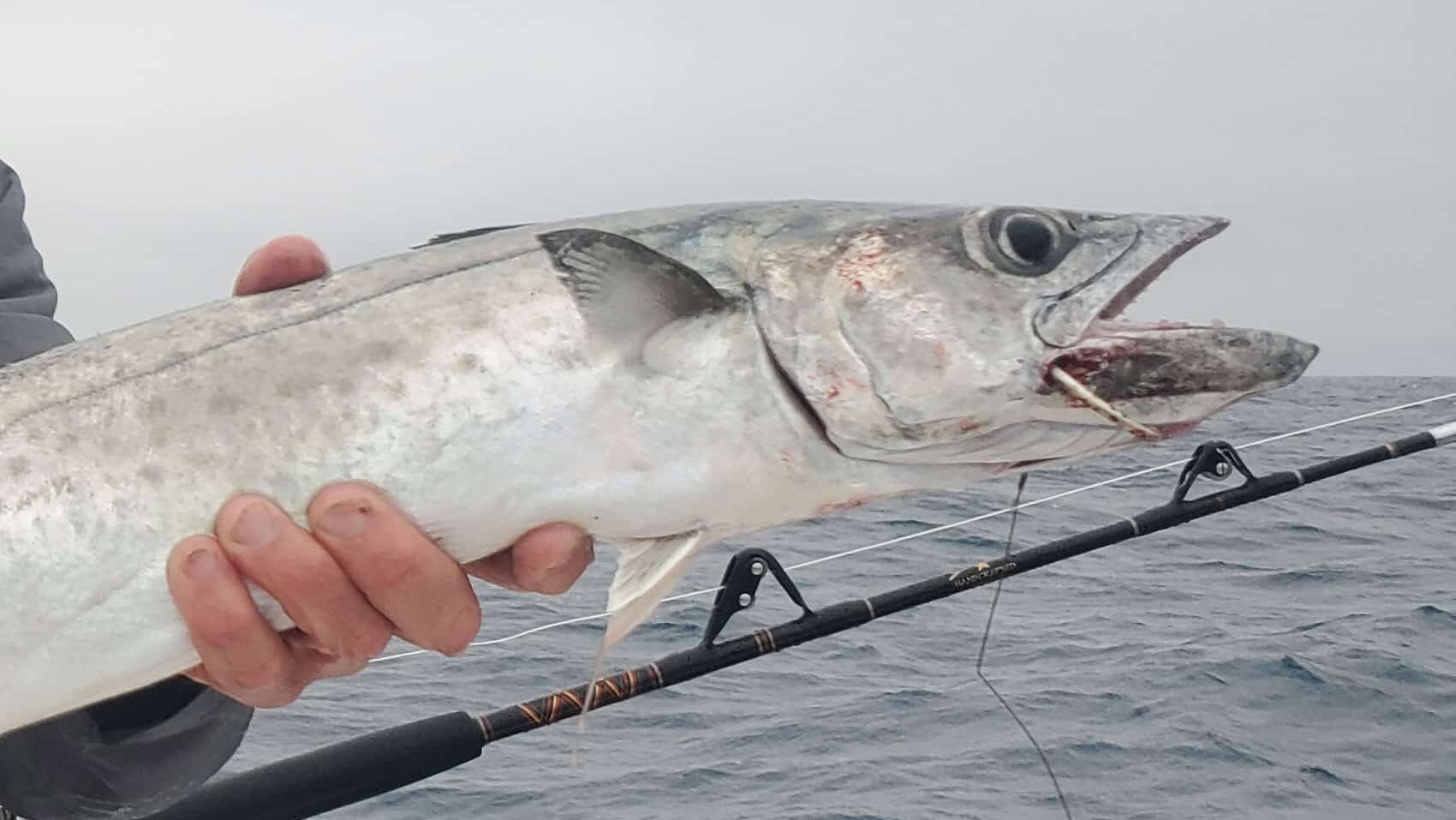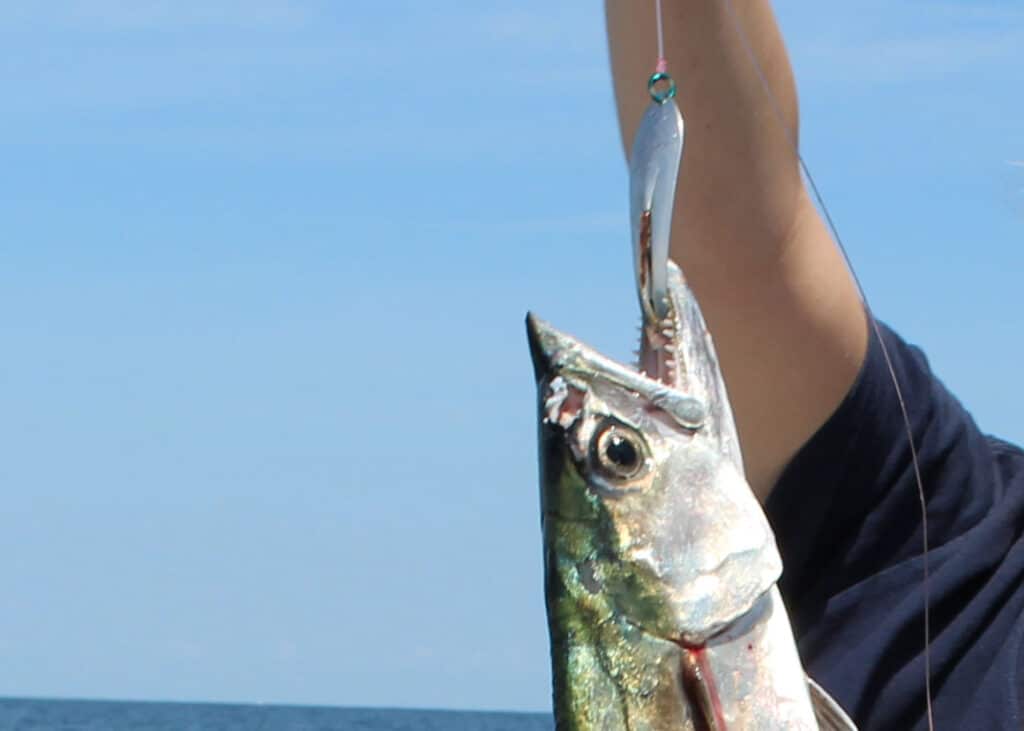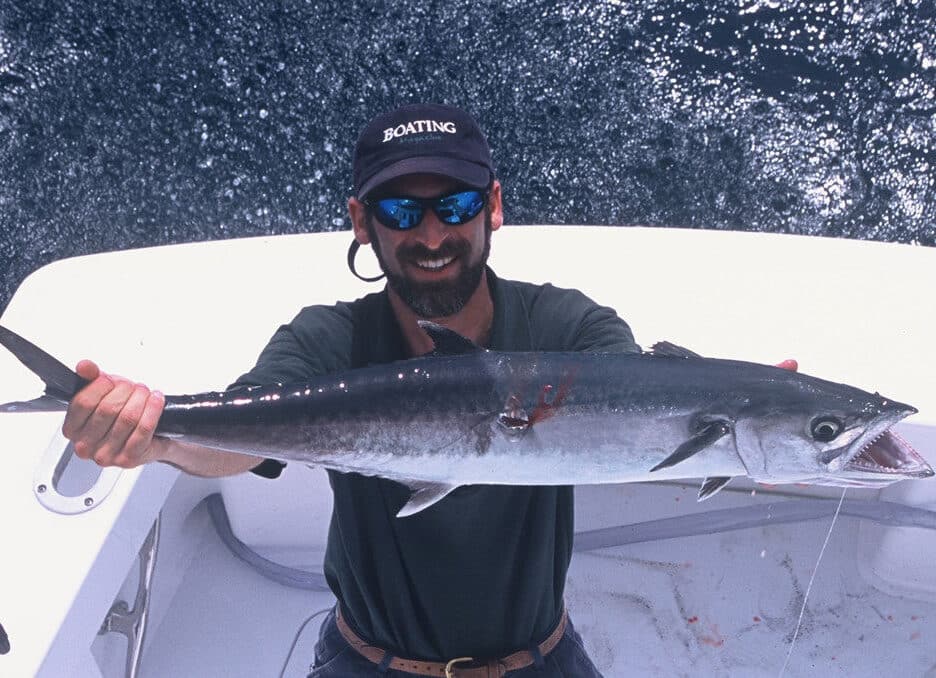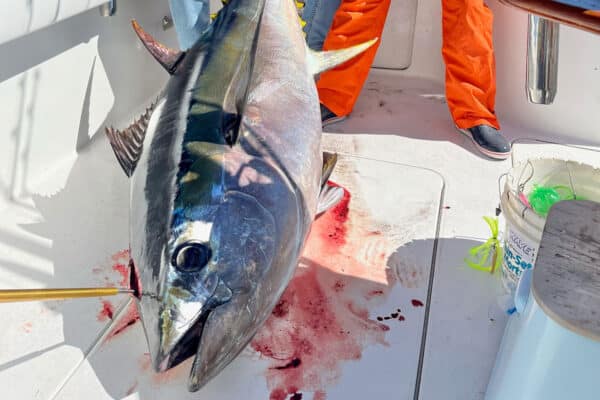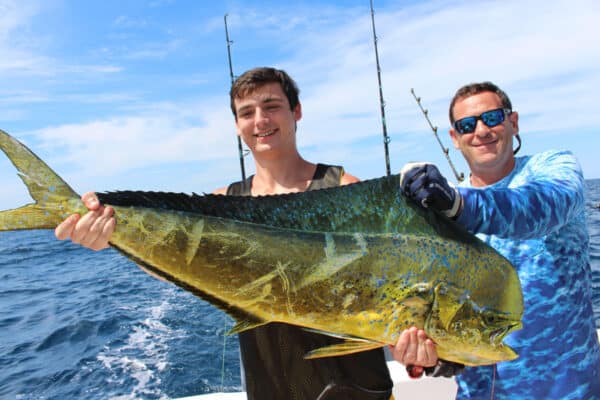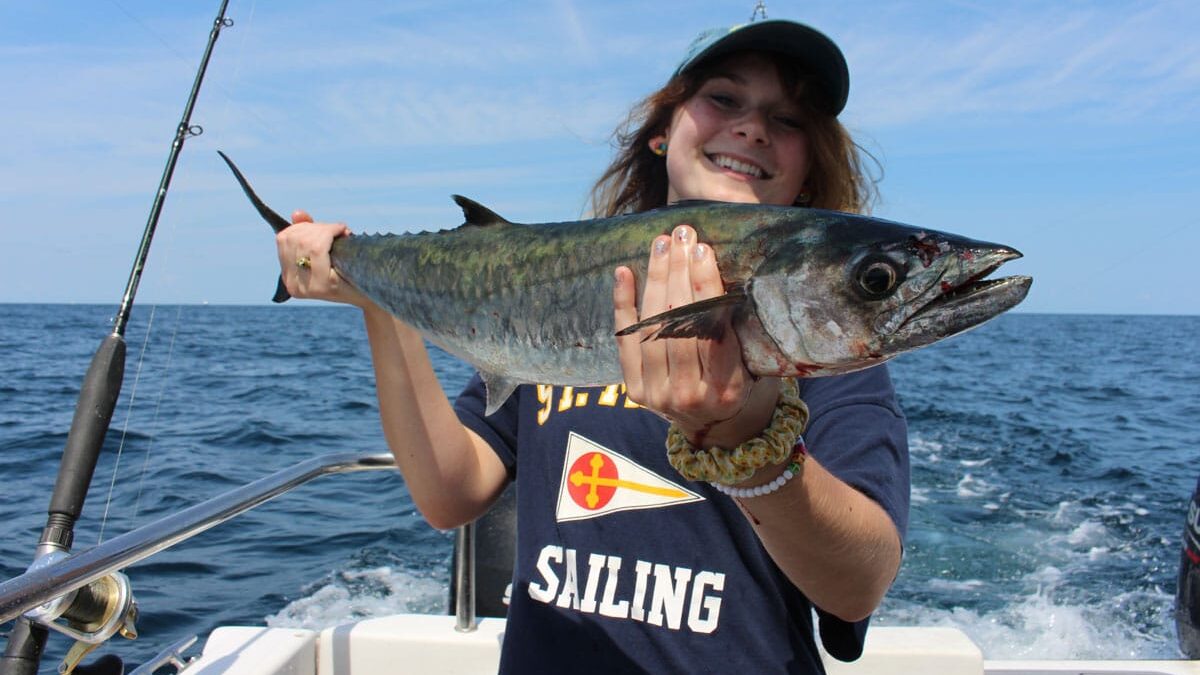
King mackerel may be most popular well south of the Mason Dixon line, but annual invasions north present an awesome angling opportunity.
Once you get north of the North Carolina line, targeting kingfish becomes a rarity—which is a shame, because in late summer and early fall Mid-Atlantic anglers can get in on plenty of hot kingfish action clear up to Delaware. In fact, in 2023 the state record for Delaware was shattered by a 52-pound, 11-ounce fish. Here’s how to find ‘em, and how to catch ‘em.
Kingfish Gear
Reaching over 50 pounds, speeds of over 40 miles an hour, and sporting a mouth of razor-sharp teeth, this is one species you don’t want to target without the correct gear. Whether you plan on using spinning or conventional gear, you’ll need reels with relatively high gear ratios to keep up with lightning-fast runs the fish can (and will) make towards the boat. Twenty- to 40-pound mono is standard. Plan on running wire leaders of around three feet to eliminate bite-offs, in the 40- to 60-pound range depending on the class of fish and how finicky they’re being. While kings don’t have the same caliber of eyesight as a bigeye, they still can get leader shy if they’ve been heavily pressured. Trollers should plan on being able to run downriggers or planers from 20 to 60 feet down, and have a repertoire of plugs, spoons, and rigged baits to pull behind the boat.
As a general rule of thumb, the shinier the bait, the better. Spoons should always be rigged with a ball-bearing swivel to prevent line twist. Rigged baits can be naked, skirted, weighted, weightless—there are a bajillion different ways to rig your bait depending on the scenario you’ll be fishing and personal preference. Ballyhoo work well but ribbonfish are considered a top pick by most sharpies. Plan on using treble hooks, and ideally multiples. Kings have a tendency to strike prey in the side so having multiple treble hooks will dramatically increase your hookup ratio, especially on long, skinny baits like ribbonfish.
While drifting over or around structure, if you have live baits they’re generally free-lined or trolled super-slow. Kingfish will attack just about anything that’s live and kicking, but bunker, mullet, and spot are generally the easiest caught livies and all work great. If you plan on drifting them, get chunking. A good chum slick with chunks mixed in will bring in fish from farther away, and if it’s thick enough can keep a school at the boat once you’ve located them. Speaking of locating kings…
Locating Kingfish
If you’re looking for a heavy hitting, drag-screaming fish that tastes great and is close enough to shore that the gas split won’t have multiple zeros, look no further. Once water temps have climbed into the 70s kingfish can be found from just a few miles from shore all the way past 30 miles out. They are commonly located around man-made offshore structures like wrecks and reefs, as well as along distinct drop offs, shoals and lumps, temperature breaks, and current lines. Checking the SatFish temp charts before heading out is always a good move and if you can find a zone where temp breaks intersect hard structure, you have a winner.
One example: the Jack Spot, a lump that comes up to 45’ and is surrounded by 65’ to 90’, is about 20 miles off the beaches off the Maryland portion of Assateague Island. It sees an annual run of kingfish that can last for several months, yet it’s rare to see anyone targeting the species here.
Once you’ve reached an area you want to fish you can either set out trolling lines, or drift live baits. If you mark what you believe is a school of kings, or get a bite, focus on that area heavily. Kings are schooling fish and once you find them you can often catch multiples. If you make it to the area you want to fish and you have good structure, the correct water temps, and clean water, but aren’t seeing bait, move on to the next spot. If there’s no food the kings won’t be around. If you still aren’t finding bait and kings after checking out other areas close by, make a bigger move and repeat. Finding schools of baitfish near structure is key when it comes to locating kingfish.
Always keep an eye out for birds and bait as you cruise and as you fish. A good set of binoculars is a game changer when it comes to kings (and just about everything else out there). If it’s nice enough out and you have multiple people aboard, stick someone on the binos as you run out. If it’s rough, it’s worth stopping every now and then and scanning around. There’s nothing better than scanning the horizon to see a flock of birds diving in between silver bullets flying out of the water.
If you run into fish feeding on the surface, carefully approach the school to prevent scaring them—the last thing you want to do is run into them on plane and rip back the throttles. Get off plane well outside casting distance, and approach the fish slowly until you’re close enough. Free-lining live baits works wonders on schools of breaking fish. Toss a bait near the edge of the school and leave your bail open until it starts to take off. Another good move is casting large plugs and spoons into the school and retrieving them back quickly along the surface. These fish will often sky out of the water when they strike a fast-moving lure. When this happens, be patient and wait until the fish reenters the water before bringing the line tight. Setting the hook in the air usually leads to a swing and a miss.
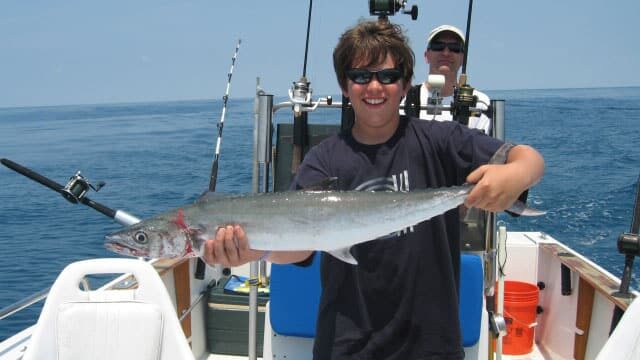
Okay Mid-Atlantic anglers, ready to go toe to toe with a southern king? Get some livies, shine up those spoons, and rig for razors. Because although their presence in these waters may be temporary, there are a lot more kingfish out there than most folks north of the Carolinas think—and when you unload that fishbox you’ll be the talk of the dock.

